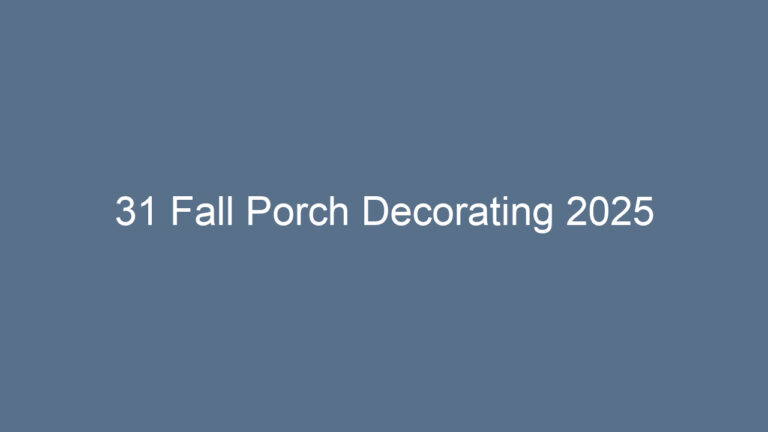16 Butterfly & Bee-Friendly Backyard Gardens

Creating a backyard that welcomes butterflies and bees is more than just a gardening trend—it’s a way to breathe life into your outdoor space. These pollinators are essential to the environment, helping flowers bloom and fruits grow. Designing a garden that attracts them can be rewarding, both visually and emotionally. Imagine the gentle hum of bees and the delicate flutter of butterflies greeting you every morning—gardening becomes less of a chore and more of a shared sanctuary with nature. In this guide, we’ll explore 16 inspiring ideas to transform your backyard into a haven for these tiny yet mighty creatures.
In This Article
- 1 1. Wildflower Wonderland
- 2 2. Herb Garden Haven
- 3 3. Butterfly Bush Delight
- 4 4. Pollinator-Friendly Shrubs
- 5 5. Nectar-Rich Flower Beds
- 6 6. Container Gardens for Small Spaces
- 7 7. Native Plant Paradise
- 8 8. Butterfly Puddling Station
- 9 9. Fruit Tree Oasis
- 10 10. Wildflower & Grass Mix
- 11 11. Continuous Bloom Design
- 12 12. Pollinator Pathways
- 13 13. Wildflower Border Edges
- 14 14. Pollinator Perches
- 15 15. Companion Planting
- 16 16. Creating a Sanctuary
1. Wildflower Wonderland
Planting a wildflower garden is one of the easiest ways to invite pollinators. Wildflowers are not only low-maintenance but also offer nectar-rich blooms that bees and butterflies love. Mix colors, heights, and bloom times to ensure your garden has life throughout the seasons. You can include coneflowers, black-eyed Susans, and milkweed to provide both beauty and nutrition. A wildflower patch can mimic a natural meadow, allowing butterflies to flit freely and bees to buzz from flower to flower. Over time, you may even spot rare species visiting your garden, turning it into a lively micro-ecosystem.
2. Herb Garden Haven
Herbs like lavender, thyme, mint, and rosemary aren’t just for cooking—they’re magnets for bees. These herb gardens release fragrant scents that guide pollinators directly to your backyard. Planting in clusters rather than scattered helps pollinators find them efficiently. Additionally, herbs offer continuous blooms and nectar over long periods, sustaining bees and butterflies alike. Beyond attracting pollinators, herbs can double as natural remedies and culinary treasures, making your garden both functional and lively. Remember to avoid pesticides, as they can harm your tiny visitors.
3. Butterfly Bush Delight
The butterfly bush, or Buddleja davidii, lives up to its name. Its long, fragrant flower spikes are irresistible to butterflies, drawing them in with vivid purples, pinks, and whites. Plant these bushes near seating areas so you can observe the fluttering guests. Regular pruning encourages fresh blooms, keeping your garden colorful from summer to fall. Be mindful that some regions consider it invasive, so choose native alternatives if needed. This plant adds height and structure to your garden, creating natural corridors where butterflies can rest and feed.
4. Pollinator-Friendly Shrubs
Shrubs like viburnum, lilac, and serviceberry serve as butterfly and bee magnets while providing shelter. These flowering shrubs offer nectar-rich blooms and places for pollinators to hide from predators. They can define garden borders or create natural partitions, adding depth to your backyard. For bees, the dense foliage offers a safe place to navigate and forage. Pairing shrubs with lower-growing wildflowers ensures layered habitats that support diverse pollinator populations. The combination of flowers and greenery also enhances the visual texture of your garden.
5. Nectar-Rich Flower Beds
A flower bed full of nectar plants ensures continuous sustenance for pollinators. Include blooms like zinnias, marigolds, and sunflowers, which are easy to grow and vibrant. Rotate plants seasonally to maintain color and food sources year-round. Dense planting helps butterflies find resting spots and provides easy access for bees. Incorporating native species increases your garden’s success, as local pollinators are adapted to these flowers. Using mulch around the beds keeps soil healthy and retains moisture, indirectly supporting pollinator health.
6. Container Gardens for Small Spaces
Even if your backyard is limited, container gardens can attract pollinators. Pots and raised planters with flowering plants like petunias, pansies, and lavender can create mini havens for bees and butterflies. Containers allow flexibility—you can rearrange them for sun exposure or aesthetic appeal. Adding trailing plants like nasturtiums adds visual interest while providing accessible blooms for butterflies. For urban dwellers, container gardens transform small patios or balconies into thriving pollinator-friendly zones.
7. Native Plant Paradise
Native plants are tailor-made for local pollinators. Species like milkweed, goldenrod, and asters attract butterflies and bees efficiently because they’ve evolved together. Native plant gardens are low-maintenance and often more resistant to pests. They support the entire ecosystem, including caterpillars that turn into butterflies. Planting a variety ensures diversity, which boosts pollinator resilience. Plus, native gardens can withstand local weather conditions better than non-native species, keeping your pollinator haven sustainable for years.
8. Butterfly Puddling Station
Butterflies need more than flowers—they require water and minerals. Creating a puddling station with shallow water and sand or stones helps butterflies hydrate and obtain essential minerals. Position it near flower beds to attract maximum visitors. You can sprinkle a little salt or crushed minerals to enhance the effect. This small addition makes your backyard more than just a garden—it becomes a full-service stop for pollinators, increasing their time spent in your garden and improving the health of visiting populations.
9. Fruit Tree Oasis
Fruit trees like apple, cherry, or plum are dual-purpose: they provide food for humans and nectar for pollinators. Blossoms attract bees and butterflies in spring, while fruit attracts birds in summer, creating a lively ecosystem. Interplant with flowers beneath the canopy to enhance habitat richness. Trees also offer shelter from wind and predators, making your backyard safer for pollinators. The combination of flowers, trees, and fruits creates a multi-layered garden that benefits a wide array of wildlife, not just pollinators.
10. Wildflower & Grass Mix
Combining tall grasses and wildflowers gives pollinators shelter and easy access to nectar. Grasses like switchgrass or fountain grass create natural corridors for butterflies to navigate safely. Mix in native wildflowers to ensure blooms throughout the seasons. This combination mimics natural habitats, encouraging more frequent visits from pollinators. Taller grasses can also serve as perches for butterflies, providing vantage points and resting spots. The layered look adds both function and beauty, making your garden feel wild yet curated.
11. Continuous Bloom Design
Planting for continuous bloom ensures pollinators always have nectar. Plan your garden so something is flowering in every season—from early spring crocuses to late fall asters. Include perennials like echinacea and annuals like cosmos. Continuous bloom gardens sustain bees and butterflies longer, allowing them to thrive in your backyard. Strategically layering short, medium, and tall plants creates diverse habitats. It also maximizes visual appeal and makes your garden feel lively year-round.
12. Pollinator Pathways
Create pollinator pathways by linking flower beds, shrubs, and water sources. This encourages butterflies and bees to explore your backyard fully. Paths can be literal stone walkways or visual corridors of blooms leading from one area to another. Providing connected habitats ensures pollinators don’t waste energy searching for food. These pathways also make your garden interactive, inviting humans to walk among the pollinators without disturbing them.
13. Wildflower Border Edges
Edges are often overlooked but perfect for pollinator-friendly borders. Plant a mix of short wildflowers like coreopsis and creeping thyme along fences or garden boundaries. This ensures every inch of your backyard contributes to pollinator health. Borders create transition zones between garden spaces and wildlife areas, providing safe passage. Butterflies love the protected edges, and bees find easy access to nectar. This simple addition increases your backyard’s ecological value without taking up central space.
14. Pollinator Perches
Adding perches and resting spots for butterflies can make your garden more inviting. Small rocks, low logs, or bare patches of soil allow butterflies to sunbathe and rest between flights. Bees also benefit from flat surfaces for landing. These elements give your garden depth and functionality beyond flowers. You’ll notice increased activity as pollinators feel safer and more comfortable. Think of your garden as a tiny city designed for your buzzing and fluttering visitors.
15. Companion Planting
Companion planting combines flowers and crops to maximize pollinator attraction. For example, plant marigolds near tomatoes or lavender near peppers. Pollinators get multiple food sources in one area, and your plants benefit from better pollination. This approach blends aesthetics with functionality. Additionally, companion planting can deter pests naturally, reducing the need for chemicals harmful to pollinators. The synergy between plants creates a vibrant, resilient ecosystem in your backyard.
16. Creating a Sanctuary
Finally, a backyard isn’t just about plants—it’s about atmosphere. Leave some natural areas with fallen leaves, deadwood, and native ground covers. These sanctuaries give butterflies and bees safe nesting spots and shelter. Avoid pesticides, maintain diverse plantings, and rotate blooms to sustain life. Over time, your garden becomes more than just decorative—it turns into a vibrant, pollinator-friendly ecosystem that benefits wildlife, humans, and the planet alike.






